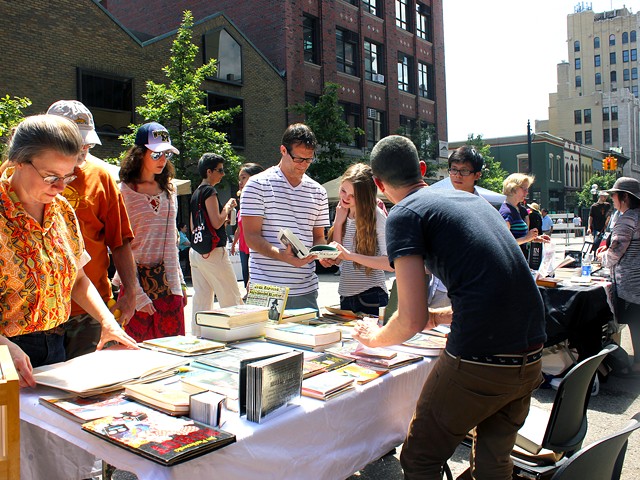Me and Earl and the Dying Girl: B-
Winner of both the Grand Jury Prize and the Audience Award at this year's Sundance Film Festival, Alfonso Gomez-Rejon's sophomore feature had the kind of low-key sentimentality and quirky teen personality to ignite a bidding war between distributors. It also represents everything good and bad that Sundance features have become.
On the one hand, you have an energetically directed, well-acted, and reasonably smart film that gently plucks the heartstrings and tickles the funny bone. On the other hand, it's a movie infected by a hipster's version of racism, one where the filmmakers think its multi-hued cast gives it diversity cred while neglecting to notice that its black and female co-star (the titular "Earl" and "the Dying Girl") exist solely to make a young white male with no actual problems feel better about himself. Yay.
Greg (Thomas Mann), the movie's lead character (aka the "me" in the title), is a morose teen who has spent four years positioning himself as the neutral party in a high school carved into the reductive cliques and cultures (jocks, goths, theater geeks, nerds, etc.) that Hollywood has been imagining for decades. Self-centered in a shoulder-shrugging, self-deprecating way, Greg is suspicious of attachment and has exactly one friend, Earl (RJ Cyler), who is black and lives on the other side of town. The two share a fondness for Criterion Collection-style films, which they remake as straight-faced spoofs with such titles as: "The 400 Bros," "Senior Citizen Kane," and "Pooping Tom." It's the kind of quirky, never-happen-in-real-life hobby that makes hardcore film fans salivate, but is really a copycat concept of Be Kind Rewind's "Sweded" movies.
The dying girl is Rachel (Olivia Cooke), whose struggle with leukemia has caused her to drop out of school. This inspires Greg's mom (Connie Britton) to insist that the socially awkward teen provide her with friendship and support. His tenured, lay-about dad (Nick Offerman) agrees. Filled with resentment, Greg visits Rachel and the two agree to suffer through each other's company, at least until Greg's mom finally backs off. Needless to say, the two end up forging a close relationship, one that forces Greg to become a better person and Rachel to ... well ... I guess she gets some company. And Earl ... he's there too. But not much. Mostly he collaborates with Greg on a special film project for Rachel and, um, advises his moviemaking partner to go for "dem titties."
It's this relationship that holds the most potential and that fails so completely. Earl, as depicted, is barely a character, mostly present to give Greg some texture and, ultimately, to dare him to stop navel-gazing. At first, there's a hint that the film intends to confront whiter-than-white Greg's alienation from an ever-growing multicultural fabric. He even insists on referring to Earl as his colleague instead of his friend. But nothing advances from that setup, and though the two young actors have an easy rapport, the focus of their friendship is dramatically lopsided in favor of the white kid.
The film's plot comes courtesy of Jesse Andrews' novel, which he, in turn, adapted for the screen. For its first half it acknowledges the young adult cliches that accompany teen cancer plots by carving the story into cheekily titled chapters such as "The Part Where I Meet a Dying Girl" or "Day One of Doomed Friendship." Andrews is a witty writer who does a decent job of balancing humor and emotion. But some of the jokes are overplayed — most especially Molly Shannon's boozy Mrs. Robinson routine, which is only saved by flashes of genuine grief. There's also something refreshing about the way Gomez-Rejon's utilizes real Pittsburgh homes and streets (Greg's family lives in the home where Andrews grew up). The random clutter of everyday life grounds an otherwise twee tale in reality.
But as Me and Earl and the Dying Girl meanders up to its tearjerker finale (which is handled, thankfully, with coy deftness), it becomes clear both Rachel and Earl ultimately exist to help Greg become a better person, a better filmmaker, and, hell, get into college (Earl's plans for the future are notably ignored).
The process of growing up is learning the world does not exist to serve your narrative alone, that you are not the narcissistic center of the universe. The irony of Andrews and Gomez-Rejon's film is that even as Greg learns to think about someone other than himself, Me and Earl and the Dying Girl really doesn't bother to follow suit. The dying Jewish girl and the street-smart black kid are really just cogs in the machinery of Greg, thus suggesting that movie's title should have been shortened to its first two letters.
Me and Earl and the Dying Girl is rated PG-13 and has a run time of 104 minutes. Opens Friday, June 26 at Ann Arbor's State Theatre and Bloomfield Hills' Maple Theater.
Follow Metro Times film critic Jeff Meyers on Twitter:





